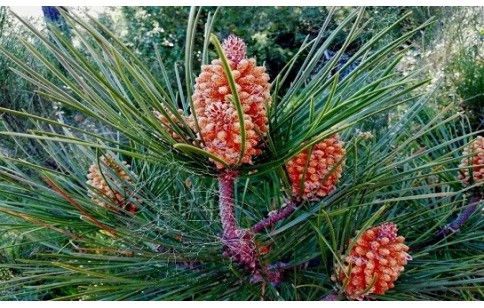- Code : #1095 10 mg
- Formula : C₁₆H₁₄O₄
- CAS : 75291-74-6
Pinus pinaster
Pinus pinaster, “Maritime pine” or “Cluster pine” in English and “Pin maritime” or “Pin des Landes” in French, belongs to the Pinaceae botanical family.
Native to the Mediterranean area, it is a tree that grows in coastal sands and dunes, also on inland mountains. It can reach a height of 20 to 35 m.
Cultivated for timber, it is also an ornamental tree and is rich in oil and resins.
The bark extract has been used worldwide as a herbal remedy, nutrition and supplemental food in many kinds of degenerative diseases. It has been reported to have cardio-vascular and cholesterol lowering benefits, to increase wound healing processes, to have anti-inflammatory effects in asthma patients and reduce attention-deficit hyperactivity disorder symptoms in children. Research has demonstrated that the bark extract can be used as a source of natural antioxidants in food and pharmaceutical industry.
Pinus pinaster bark extract contains numerous phenolic compounds such as polyphenolic monomers, procyanidins, and phenolic acids (derivatives of benzoic and cinnamic acids).

- Code : #0985 S 10 mg
- Formula : C₃₀H₂₄O₁₂
- CAS : 41743-41-3
- Code : #0983 5 mg
- Formula : C₃₀H₂₆O₁₂
- CAS : 20315-25-7
- Code : #0984 10 mg
- Formula : C₃₀H₂₆O₁₂
- CAS : 29106-49-8
- Code : #4963 S 20 mg
- Formula : C₁₄H₁₂O₃
- CAS : 501-36-0
- Code : #1220 10 mg
- Formula : C₁₆H₁₂O₄
- CAS : 520-28-5
- Code : #5065 S 100 mg
- Formula : C₁₀H₁₆
- CAS : 99-85-4
- Code : #5067 S 100 mg
- Formula : C₁₀H₁₆
- CAS : 586-62-9









